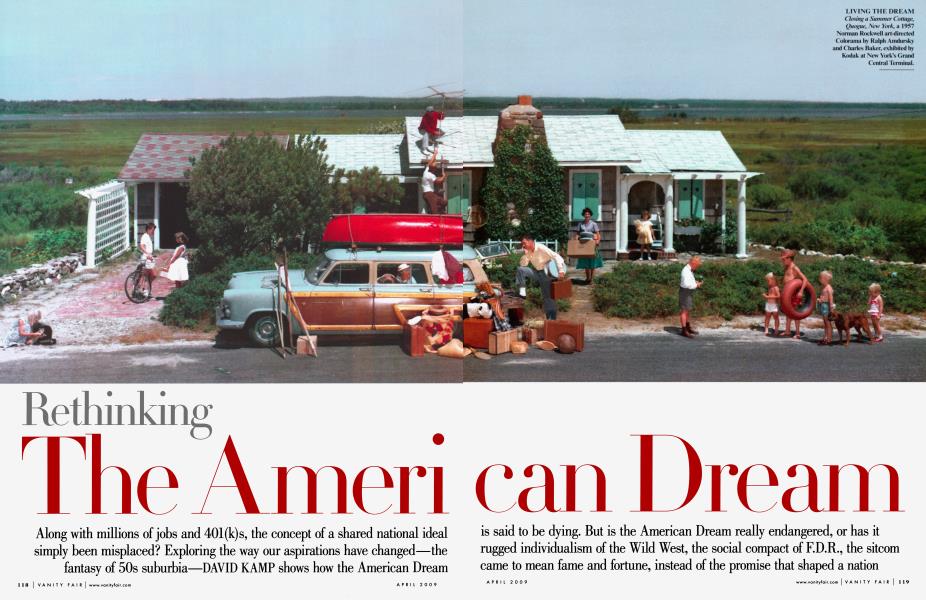
Hyperrealism can be described as an art style in that paintings and sculptures resemble high-resolution images. These images lack narrative elements, or opinions. Hyperrealistic work is often considered an evolution of photorealism. In addition to being more detailed than photographs, hyperrealism also uses more sophisticated lighting techniques. This art form is used frequently in commercial and architectural environments.
Hyperrealism looks like high resolution photographs.
Hyperrealism is an art form where sculptures and paintings resemble high resolution photographs. The art of hyperrealism is more than using digital technology. Instead, it's about paying attention to the details that make an image appear real. Artists create convincing simulations of reality by using textures, surfaces, lighting effects, or other elements. Hyperrealism is a step beyond photorealism, which is a style of art that mimics photographs with paint.
Hyperrealism artists use the inherent anomalies of digital images (including fractals), to highlight their digital nature. Robert Bechtle, Denis Peterson and Chuck Close have all used fractalization techniques to create hyper-realistic images.

Hyperrealism art has grown in popularity over the past decade and has gained prominence in Europe, the United States, and elsewhere. The style has been widely praised for its photo-like appearances and flawless technical techniques. It challenges the limits of the human eye and has seen a rise in popularity thanks to technological advancements.
Hyperrealism has no opinion.
Hyperrealism is an art form that attempts to capture the real world with extreme realism. Its purpose is not to convey opinion, but to be as realistic as possible. It is intended to evoke emotion through a realistic image. Although it has been criticised by some for not being opinionated, some people praise this type of artwork as a tribute the human spirit.
The artworks of hyperrealism share four common themes. One theme is the relation between the televisual mediums and modern violence. Galym Madanov’s 1989 Recreational Space depicts the screen exploding from an ordinary television, with small fragments containing incendiary material bursting into the viewer's space.
Hyperrealism is an art genre with many followers. Artists often use accurate color palettes to create realistic images. Hyperrealism depends on the precise selection of colors, even though the proportions may not be perfect. Hyperrealism art is also popular for its ability to influence our emotions.

Hyperrealism artwork lacks narrative elements
Hyperrealist paintings are accused of not showing inner states and removing the artist's interpretation. These paintings often depict scenes of electrified fences and salt shakers. They also include plastic nozzles, interiors of fridges, and reflections of the sun onto a car's windows. This technique is used by many artists, including Lisa Moore.
While hyperrealism may be new, it is not uncommon. It evolved from other movements and styles. It utilizes traditional art tools such a clay, ink and graphite. Only a few are among its pioneers. Hyperrealism's aesthetics are different from other art movements. It allows for greater freedom and experimentation.
It captures the essence and emotion of real life. Although some may find hyperrealism pointless, it is an example of human capability.
FAQ
What is pop-media culture?
Pop culture is all around us. It's everywhere we go: TV, radio, film, music, magazines, newspapers, websites, social networks, etc. It's all around us 24 hours a day. It has an impact on everything: music, clothing, language and politics. What is pop cultural? Wikipedia says that popular culture, or popular culture, refers only to ideas and products designed to be mass-produced in society. This term is often used to refer to TV shows, movies and music. Pop culture goes beyond entertainment. This term refers to anything consumed by the masses such as video games and sports, toys or clothing, fast food, political campaigns and many other things.
Who first coined the term Pop Music
Frank Zappa invents the term pop music. He used the word pop music to describe his style of music.
He said that his goal was to make music that is accessible to everyone. His music is called pop music because of this.
Zappa also came up with the phrase "You can tell it's popular when ..."". This means that something is very popular if people love it. Michael Jackson's Thriller is one example of the greatest-selling albums.
Zappa's definitions for pop music are quite different from the current. Pop music can include all music. However, back then only certain music was considered popular.
How did pop music come into being?
It was an accident. The accident that someone accidentally knocked down a piano in 1920 caused the first song's creation.
The recording company loved what they heard so they decided to release the single.
This was the first single to be recorded.
Since then, pop music has become the most popular form of musical entertainment today.
What are some positive features of pop culture?
Pop culture doesn't have to be bad. Pop culture gives people something to talk. Also, it helps people express their creativity. Pop culture can be used by artists to promote their works.
Pop culture brings people closer together, which I believe is the best part. Everyone wants to watch the exact same shows. Everyone likes the same music. Everyone likes the same movies. Pop culture allows us to connect.
Not all pop culture is healthy. Some films glorify violence, for example. Some TV programs mock people with mental disabilities. And some bands encourage fans to do drugs.
What should we do about the negative aspects pop culture?
We need to try to avoid the bad aspects of pop culture. We shouldn't let it influence us. It can have negative effects on our health. It can also lead to crime. It can also affect our relationships.
Pop culture should be considered as a way to help or hinder society. Are they promoting positive values? Are people being influenced into doing bad things?
And finally, we should ask ourselves whether we're happy with the kind of world we live in. What do we enjoy about the music we listen too? The TV shows we watch? The clothes we wear?
If we care about our future, we must take responsibility for our actions. We must decide the world we want. Then, we can choose which type of pop culture to follow.
How did pop culture develop?
Technology was the driving force behind popular culture's development. It developed with the rise of mobile technology. The invention of the radio made mass communication possible. This was the beginning of television, which eventually led to the birth of the internet.
People first started to use computers at home. They were also exposed to computer gaming. These games were played on consoles like the Nintendo Wii and Sony Playstation 3. They are now becoming available for free online. Many youngsters now choose to play videogames over watching TV.
Video games are very popular with children and teenagers. They can be played alone or with friends via the internet. Call Of Duty or Grand Theft Auto can be very violent. Parents are concerned about their children playing these violent games. Others find it fascinating to see what happens to a character when they die.
Music videos are another way youth can be influenced by pop culture. They feature celebrities and information about current trends. They are very popular with young people. Music is an integral part of our lives.
Many artists use special effects in music videos to enhance their songs. Rappers may use makeup and wigs to make themselves more appealing. Some musicians have to go through extreme physical and mental challenges in order show their bodies. Many singers are able to sing while wearing costumes.
Today there is so much music to choose from. You can find any type of music that you desire. This isn't always a good thing. Music can sometimes encourage violence. People are often angry when they hear certain songs or words. Sometimes, they even commit crimes.
50 Cent was one of the victims. The line from his song Get Rich Or Die Trying is "I'm going down a motherfucker / I don’t know why, but I might." Someone heard this song and thought it meant that he was going to kill someone. He was threatened by a man who called him. 50 Cent updated the lyrics. It now reads: "I'll shoot an inchch down/ I'm not sure why, but I may."
Popular culture is essential. It is important to learn how it affects you. If we don’t understand how it affects us, we won’t be able prevent its harmful effects.
Are Tik Tok and its pop culture?
The answer is yes! It's not just for teenagers anymore. You can make these short videos for anyone.
The app is used daily by more than 200 million people around the globe. And this number grows by millions each day.
TikTok offers brands a unique opportunity to connect with consumers and establish meaningful relationships.
Many influencers have established huge followings on TikTok. These creators create original content to engage audiences all over the globe.
What are you waiting to do? Here are four methods to capitalize on this trend.
-
Create viral content
-
Engage Influencers
-
Use Visuals Effectively
-
Creativity with Your Audience
How can we avoid the dangers posed by pop culture?
We must first recognize when pop music is influencing our lives. We must then make sure we aren't being influenced by pop culture. Here are some ways you can avoid being influenced by bad influences
-
Avoid watching Game Of Thrones or other violent shows.
-
Do not spend too much time on the Internet. Read books instead.
-
You should watch less TV. Spend your free time on healthy activities.
-
Take care of what you post online. It is impossible to delete comments after they are posted.
-
Verify that the websites you visit contain security measures. Before you provide personal information, be sure to check them.
-
Do not be compelled to do anything that could endanger your safety.
Talk to an adult about if you think you might be addicted to pop culture. You can reach out to your local library or National Center For Missing &exploited Children (1 800-THE LOST).
Statistics
- For example, the term hater meaning someone who strongly undermines or criticizes others, often due to pathetic jealousy, likely emerged from hip hop culture, such as the term playa hateras, used by influential rapper Biggie Smalls as early as 1995. (simplicable.com)
- [17][18][19]Definition[edit]According to author John Storey, there are various definitions of popular culture. (en.wikipedia.org)
- According to Kathryn Sorrells (2013, pp. 142-144), there are several ways that we can become informed consumers of popular culture. (socialsci.libretexts.org)
- Recently, the market share across Western Europe has ranged from 60-75% (Hopewell, 2013). (socialsci.libretexts.org)
- According to CNBC.com, “more than 70% of the film's revenue came from countries outside the US” (https://www.cnbc.com/2019/01/08/aqua...nal-sales.html, ret. 8/18/19). (socialsci.libretexts.org)
External Links
How To
What is popular culture?
It's all around us: popular culture. It's everywhere: books, movies, music, television shows, video games, social networking sites, etc.
Popular culture influences our lives. Our daily routines are influenced by what we see on TV, read in magazines, listen on the radio, and hear at concerts. We watch TV series, play video games, go shopping, hang out with friends, attend parties, meet people online, and spend time surfing the Internet.
But just because something is popular doesn't mean it's good for business.
Here's where media technology comes in. They provide tools that allow us to access popular culture in a way that helps us connect with consumers.
The media technologies can be used for:
-
Write content about products or services
-
Engage audience members with the actors, comedians, and authors they love
-
Promote brands and businesses
-
Promote your brand
-
Track consumer trends
It is important to become familiar with popular culture in order to improve brand awareness, customer loyalty, create leads, and attract more customers. You can do this through media technologies.